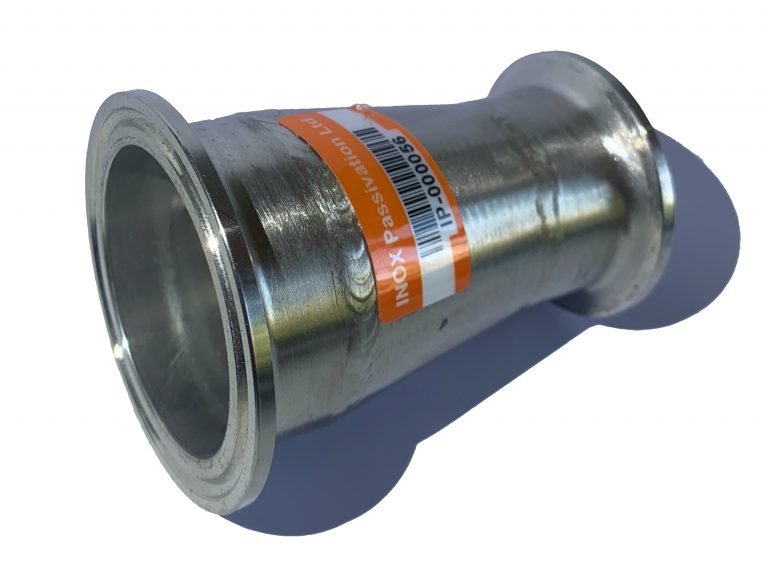
Prevention of Contamination - Supplier Selection
Ordinarily, the main reason for having a chemical cleaning contractor on your site is to either remove a form of contamination from your equipment, or as part of a pre-commissioning activity to ensure your equipment is in optimal condition for service. It is therefore, of the utmost importance that these services do not (ironically) introduce foreign material, chemical residue, pesticides, fertilisers, animal products or anything else that could be injurious to your own processes.
Historically, chemical cleaning contractors have catered for all industries, transporting their chemistry, pumps, hoses, and manpower from one site to another: whether that be chemical plant to paper mill, oil refinery to fertiliser plant or from abattoir to pharmaceutical plant. The only cleaning method for this equipment before being shipped to its next project, would be a flush with some form of (usually) purified water – This in most cases whilst still connected to its most recent assignment.
As there are no industry guidelines or regulatory body for chemical cleaning contractors to follow or in fact be held accountable to, this is often the norm. These practices are still widely accepted and go unchallenged – with most clients assuming that all equipment brought on their site is fit for use.
You should consider asking the following questions when sourcing a chemical cleaning provider:
- Where has the equipment you are using on my system been before?
- What chemistry or products have been flushed through it?
- Is it clean and fit for use?
- Is the material of your equipment compatible with my equipment?
- Can you provide evidence it will not contaminate my equipment?
INOX Passivation endeavours to be at the forefront of our industry and offer existing and prospective new clients full transparency, traceability and thus peace of mind. We have introduced control measures and systems to ensure that when we are asked these types of questions, we have the answers!
Equipment and Material Selection
We have invested heavily in hygienic and industry specific equipment. We ensure that dedicated pumps, hoses, fittings, tanks, and our heaters have been used exclusively in pharmaceutical applications and only using chemical products that are compatible with this environment. The hoses we use are either UPE or PTFE – both materials approved by FDA directives – and which are fitted with 316 stainless steel or Super Duplex hygienic couplings. Our electric pumps have either stainless steel or PTFE wetted parts and are fitted with inline strainers to ensure no foreign material is introduced into your system.
Where relevant and practicable, our equipment is carefully chosen to mirror the requirements set out in ASME BPE-2016 (material selection, surface finish, gasket choices, couplings, etc.) to ensure compliance with our clients’ requirements and to offer a high degree of assurance there can be no cross contamination from our equipment to yours.
As corrosive medias are used during chemical passivation and often in other cleaning processes, it should be noted that the correct equipment and material selection is paramount, and should be enforced. Using the wrong materials could have serious consequences, in some cases potentially leading to galvanic corrosion when two dissimilar metallic materials are connected in a corrosive environment, causing costly or even irreparable damage to your equipment.
Equipment Identity, Status & Traceability
As part of our quality control system, we introduced FMEA into our processes to determine what could possibly go wrong. We reviewed the risks, their effects and the controls we currently had in place. We then identified what we could implement to prevent a possible non-conformance or failure before it actually occurred.
Our first improvement was to uniquely number (and barcode) each individual piece of equipment that is taken to a client’s premises. This enables us to document a complete service history for every component. Typical information collected includes:
- Item description / unique identification number;
- Material of component;
- Date of purchase, manufacture, and integration into service;
- Project reference, type of site / facility or manufacturing operations item(s) have been assigned to ;
- Ingredients of the contact chemistry, including concentrations (v/v), batch numbers, temperatures and contact times;
- Associated inspection / test or calibration certificates including intervals;
- Dates of use;
- Information on next planned maintenance and service provider;
- Any maintenance and servicing, including inspections and disinfection
The usage history of each piece of equipment is recorded and readily available for review as and when requested. Record sheets are available on the INOX Passivation SharePoint library.
Occasionally, there will be downtime between contracts and when our equipment is in storage. Our second preventive action exercise identified that there was a potential for water to be trapped inside of coiled hoses, low points in pumps or collected in the bottom of our circulation vessels, and that over time bacterial growth could occur. Therefore, we introduced a disinfection process as part of our ‘mobilisation’ procedure. Before every job, the equipment selected for the upcoming project is disinfected in accordance with BS 8558:2015. In addition, our operational staff have attended EUSR Water Hygiene & cGMP training courses to ensure that we use best applicable techniques when handling both yours and our own equipment.
Moving forward, we are working on other improvement projects, all of which will enable us to provide a more effective service whilst minimising disruption and risk to your day-to-day operations.
Upon completion of a project, we offer validated inspection procedures to verify that all of our products have been removed from your equipment, leaving you confident in the knowledge that when we leave your site, we are taking literally everything that we brought with us – having not introduced anything you didn’t explicitly ask for.

